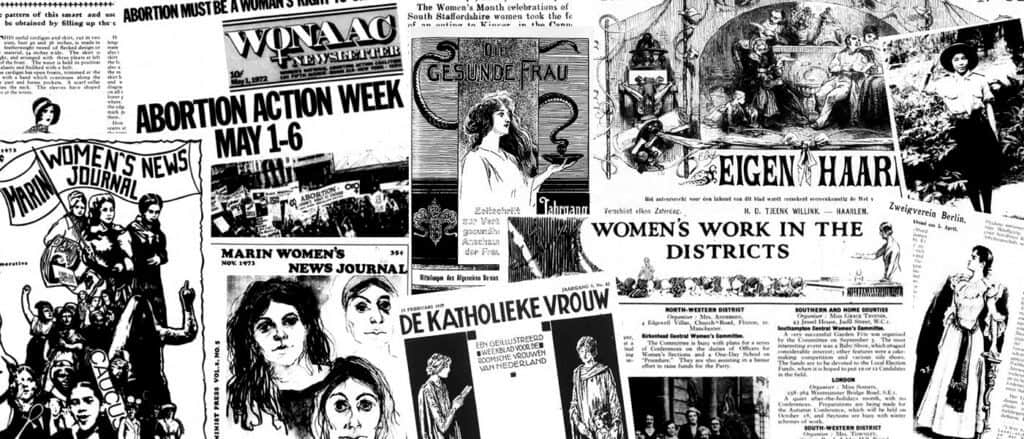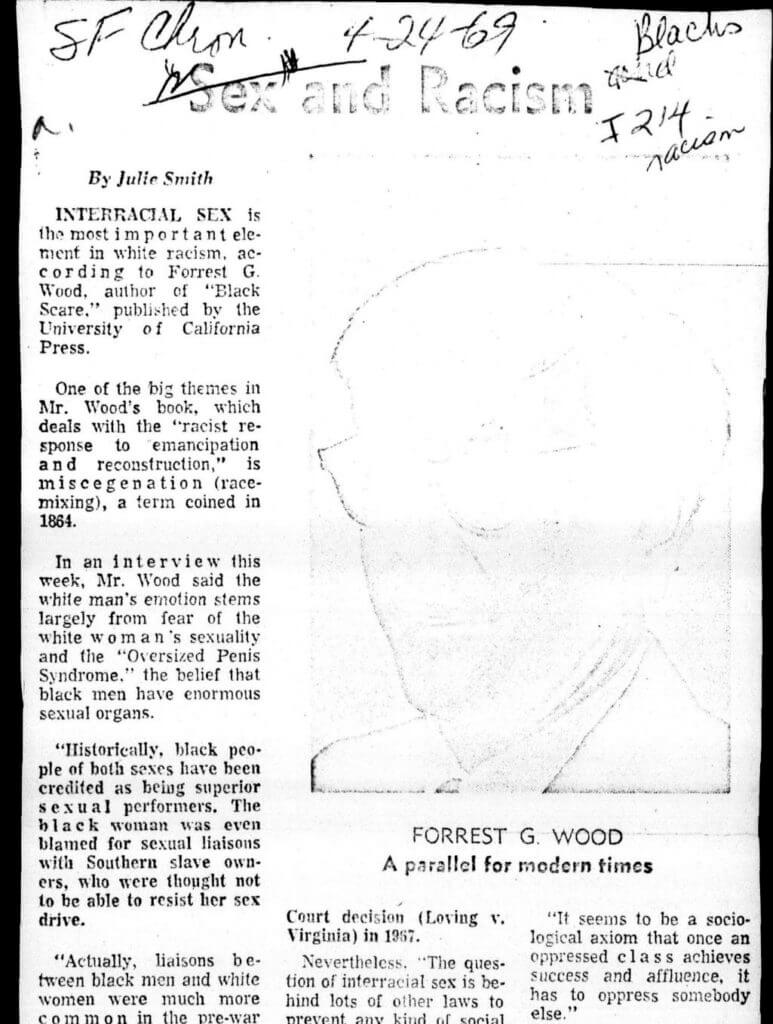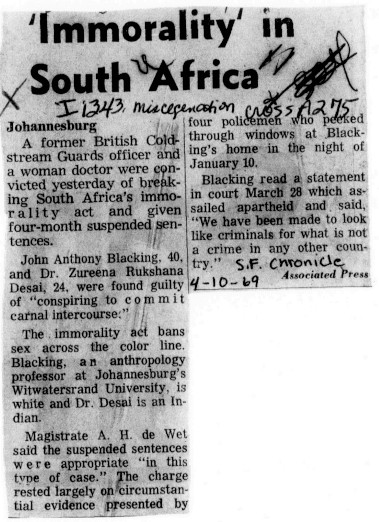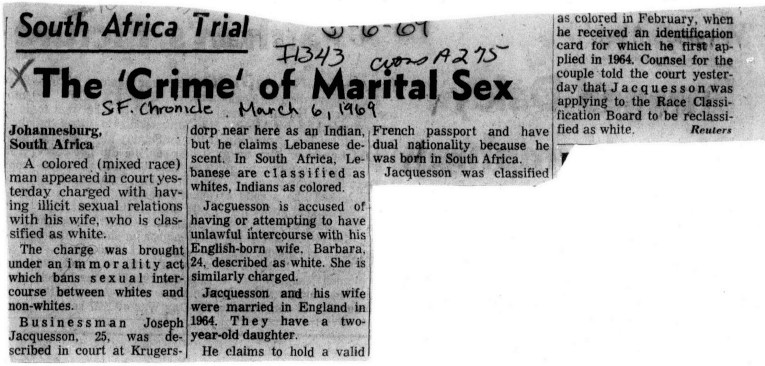│By Nonkoliso Andiswa Tshiki, Senior Gale Ambassador at the University of Johannesburg│
Tackling a research assignment can prove to be extremely challenging to many student scholars at first. However, there are a few strategies that I have up my sleeves on how one can approach a research project. Firstly, it’s important to break the question down to ensure that you understand what you are being asked to do and what is required of you. Secondly, it is paramount to find a database that will provide you with materials relevant and valuable to your project. In this post I will demonstrate how I used primary sources in Gale’s Women’s Studies Archive in a recent research assignment at my university to explore how courts investigated and punished interracial sex in South Africa under the apartheid regime. This will hopefully help other scholars who are interested in the history of South African politics see how they too can use Gale’s primary sources in their own research projects.

Historic Connections Between Sex and Racism
Connections between sex and racism have long been made in many countries around the world. Indeed, it has often been argued that concern about interracial sex is one of the things at the heart of racism. This view is evident in a really interesting article I found in Women’s Studies Archive: Issues and Identities by Julie Smith. The article describes and summarises an argument made by Forrest G. Wood in his book Black Scare: The Racist Response to Emancipation and Reconstruction which was published by the University of California Press in 1968. “Interracial sex,” argues Wood, “is the most important element in white racism”. Mr Wood highlighted that stereotypical depictions of certain racial groups in relation to sex can play a big part in racism, suggesting “the white man’s emotion stems largely from fear of the white woman’s sexuality and the “Oversized Penis Syndrome,” the belief that black men have enormous sexual organs”.
Whilst the above links interracial sex with fear and jealousy, one can also draw arguments about ‘racial fetishism’ from this primary source. ‘Racial Fetishism’ can be defined as an obsessive sexual desire for a person belonging to a different racial, cultural and/or ethnic group from their own. For instance, the idea that white women were historically more attracted to black men because they were believed to have larger sexual organs, or that white men were believed to be more attracted to black women because they were deemed to be “superior sexual performers”.

Interracial Sex Under Apartheid
Under the apartheid regime in South Africa, the dominant ideas about sex and relationships were informed and significantly influenced by the laws passed by the apartheid legislative system. This system was governed by the Afrikaner government which, many scholars have argued, was patriarchal and andro-centric in nature, and obsessed with maintaining and preserving the purity of the white population.
The Immorality Act
In an apparent attempt to preserve the purity of the white population, in 1950 the National Party-led South African government added an amendment to the Immorality Act of 1927 (which had criminalised interracial sex outside of marriage between whites and blacks) that extended the prohibition to sex between whites and all non-whites. This effectively criminalised all interracial sex as interracial marriage had been banned in 1949. Individuals who were caught or suspected to be engaging in sexual intercourse were charged with a criminal offense and punishment dealt to the accused.
Prosecution Based On Circumstantial Evidence
Some of the courts’ verdicts on crimes of interracial sex were informed and decided on through the analysis of circumstantial evidence. For example, in the newspaper article below on “‘Immorality’ in South Africa”, it is stated that the evidence presented to the court for the case of the illicit sexual relationship between John Anthony Blacking and Dr. Zureena Rukshana Desai was from four male police officers, who allegedly learnt about Blacking and Desai’s sexual relationship through peeking through Blacking’s window.

Below is another source from the same archival ephemera which outlines some of the complexities of regulating interracial sex under the apartheid regime, relating to the government’s policies of race classification.

A Rich Source for Research into Issues of Sex and Gender
As you will hopefully have seen from this brief examination of how the courts dealt with interracial sex in apartheid South Africa, Gale’s archives give students and researchers the opportunity to access a wide range of rich primary sources for the study of sex, gender and related politics. I found the Women’s Studies Archive offers versatile and rich sources of content for research projects like mine, providing resources such as manuscripts, periodicals, newspapers cuttings and more that reveal the interplay between lifestyles, sex, sexuality and gender – and the authoritative bodies which have sought to regulate individuals’ decisions in this area.
If you enjoyed reading about how Gale’s Women’s Studies Archive supported my research assignment on how cases of interracial sex were examined and punished by the courts in South Africa under apartheid, check out the following:
- Miscegenation, or ‘Fake News’ of the Civil War
- How Gale’s Archives Supported My Thesis on the Politics of Contraception in South Africa, 1970s–80s
- African Hairstyles – The “Dreaded” Colonial Legacy
- Decolonising the Curriculum with Archives Unbound
- Finding Black Female Authors in Women’s Studies Archive
- Unearthing and Decolonising the Rasta Voice
Blog post cover image citation: Girl and Boy holding hands. Image by Lareised Leneseur (@jjacobs15) on Unsplash.com


